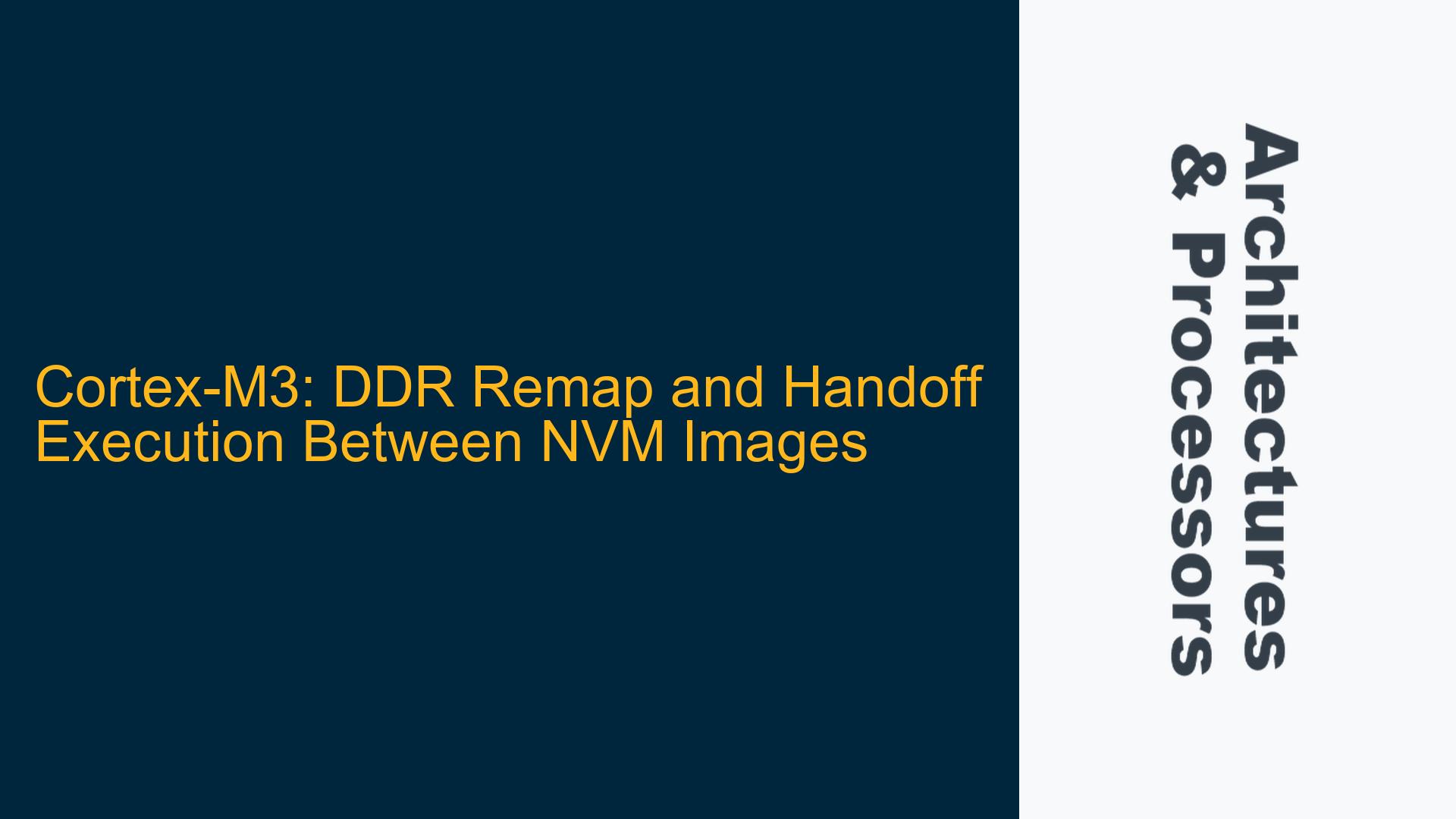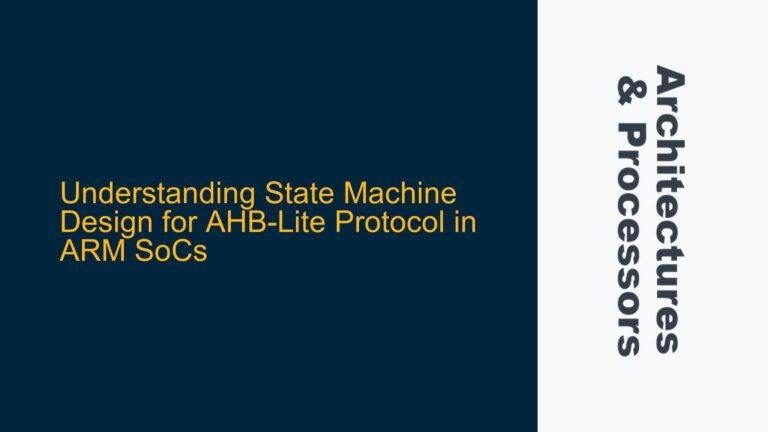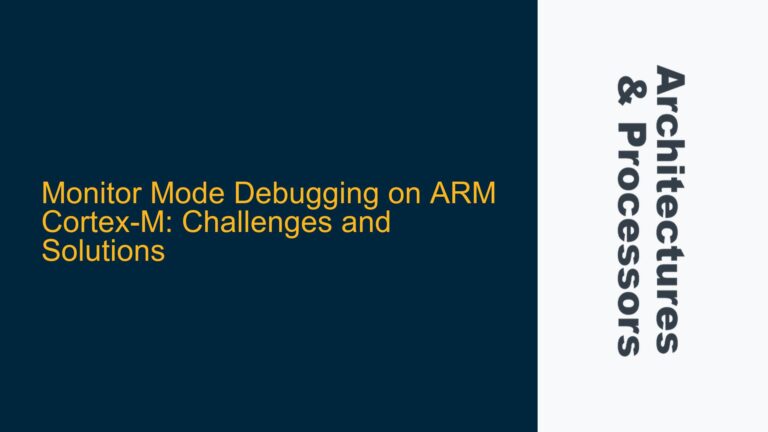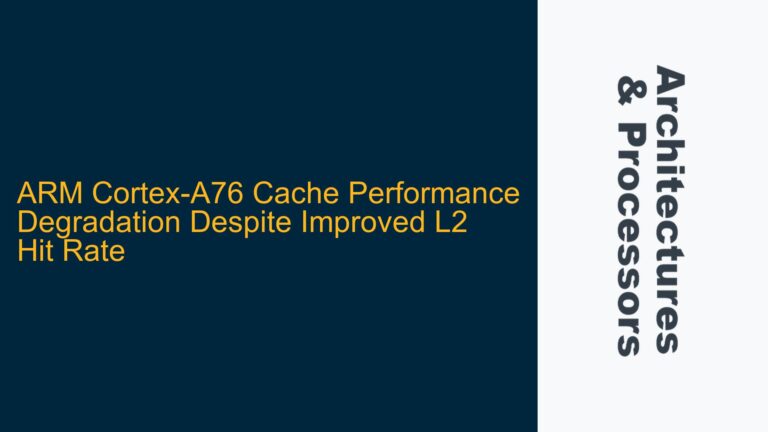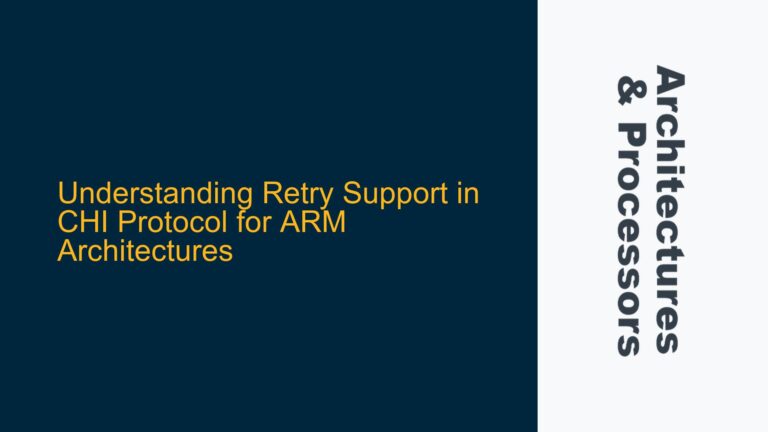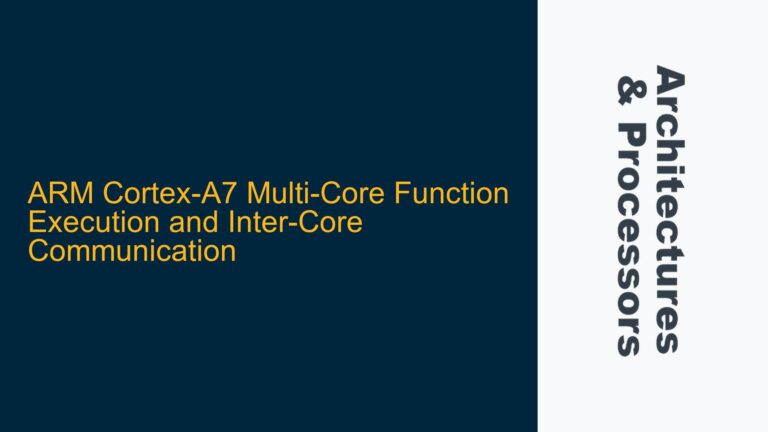ARM Cortex-M3 Boot Process and DDR Remap Challenges
The ARM Cortex-M3 is a widely used processor in embedded systems, known for its efficiency and deterministic behavior. One of the key features of the Cortex-M3 is its ability to boot from Non-Volatile Memory (NVM) and execute code from various memory regions, including DDR (Dynamic Random-Access Memory). However, transitioning between multiple images stored in NVM and remapping execution to DDR introduces several complexities that need to be carefully managed.
When the Cortex-M3 boots, it typically starts executing from the base address of NVM, where the first image (Image 1) is stored. This image contains the startup code, which initializes the processor, sets up the interrupt vector table, configures GPIOs, and performs other essential tasks. The startup code is usually provided by the CMSIS (Cortex Microcontroller Software Interface Standard) and is specific to the toolchain being used. Once the startup code completes, the main function of Image 1 is executed.
In some scenarios, it may be necessary to switch to a second image (Image 2) stored at a defined offset in NVM. This involves copying Image 2 from NVM to DDR and then remapping the execution to the DDR region. The challenge here is ensuring that the transition from Image 1 to Image 2 is seamless and that the processor state, including interrupt configurations and peripheral settings, is correctly maintained or reinitialized.
The primary question is whether Image 2 requires its own startup code or if the startup code from Image 1 persists. The answer lies in understanding the nature of the startup code and the state of the processor after the transition. The startup code in Image 1 initializes the processor and sets up the environment for Image 1 to run. When transitioning to Image 2, the processor state may not be consistent with what Image 2 expects, especially if Image 2 has different requirements for interrupt handling, memory configuration, or peripheral initialization.
Memory Remapping and Processor State Inconsistencies
The process of remapping execution from NVM to DDR involves several steps, each of which can introduce potential issues if not handled correctly. The first step is copying Image 2 from NVM to DDR. This requires ensuring that the DDR controller is properly initialized and that the memory region where Image 2 is being copied is accessible and correctly configured. If the DDR controller is not initialized or if there are issues with the memory mapping, the copy operation may fail, leading to a system crash or undefined behavior.
Once Image 2 is successfully copied to DDR, the next step is to remap the execution to the DDR region. This involves updating the program counter (PC) to point to the reset handler of Image 2. However, simply jumping to the reset handler of Image 2 may not be sufficient. The processor state, including the stack pointer, interrupt settings, and peripheral configurations, may still reflect the state from Image 1. If Image 2 expects a different processor state, this can lead to inconsistencies and potential failures.
One of the key considerations is the interrupt vector table. The Cortex-M3 uses a vector table to handle interrupts, and the location of this table is defined by the Vector Table Offset Register (VTOR). If Image 1 and Image 2 have different interrupt vector tables, the VTOR must be updated to point to the correct table before transitioning to Image 2. Failure to update the VTOR can result in incorrect interrupt handling, leading to system instability.
Another consideration is the stack pointer. The stack pointer is initialized by the startup code, and if Image 2 expects a different stack configuration, the stack pointer must be reinitialized before executing Image 2. Additionally, any peripherals that were configured by Image 1 may need to be reconfigured or reset before transitioning to Image 2. This includes GPIOs, timers, communication interfaces, and other peripherals that may have been initialized by Image 1.
Implementing a Robust DDR Remap and Handoff Mechanism
To ensure a robust transition from Image 1 to Image 2, several steps must be taken to address the potential issues discussed above. The first step is to ensure that the DDR controller is properly initialized before copying Image 2 to DDR. This involves configuring the DDR controller registers, setting up the memory map, and ensuring that the DDR region is accessible. If the DDR controller is not properly initialized, the copy operation may fail, leading to a system crash.
Once the DDR controller is initialized, the next step is to copy Image 2 from NVM to DDR. This can be done using a memory copy function, ensuring that the entire image, including the startup code, interrupt vector table, and application code, is copied to the correct location in DDR. It is important to verify that the copy operation is successful and that the data integrity is maintained.
After copying Image 2 to DDR, the next step is to prepare the processor for the transition. This involves updating the VTOR to point to the interrupt vector table of Image 2, reinitializing the stack pointer, and resetting any peripherals that may have been configured by Image 1. The VTOR can be updated by writing the base address of the new vector table to the VTOR register. The stack pointer can be reinitialized by loading the initial stack pointer value from the vector table of Image 2.
Once the processor state is prepared, the final step is to jump to the reset handler of Image 2. This can be done by loading the address of the reset handler into the program counter (PC) and executing a branch instruction. It is important to ensure that the branch instruction is executed in a way that does not disrupt the processor state, such as by using a direct branch or a function call.
To summarize, the transition from Image 1 to Image 2 involves several critical steps, including initializing the DDR controller, copying Image 2 to DDR, updating the VTOR, reinitializing the stack pointer, resetting peripherals, and jumping to the reset handler of Image 2. Each of these steps must be carefully implemented to ensure a seamless transition and to avoid potential issues such as incorrect interrupt handling, stack corruption, or peripheral misconfiguration.
In conclusion, when transitioning between multiple images in a Cortex-M3 system, it is essential to understand the processor state and the requirements of each image. The startup code from Image 1 does not persist when transitioning to Image 2, and Image 2 must have its own startup code to initialize the processor and set up the environment for its execution. By following the steps outlined above, you can ensure a robust and reliable transition between images, even when remapping execution to DDR.
